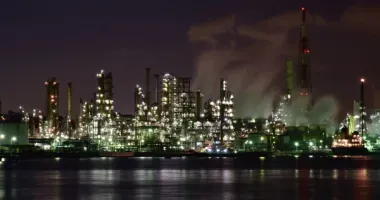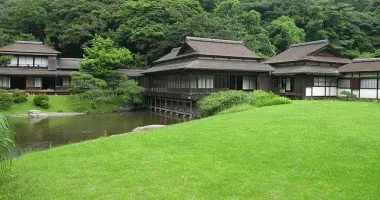Sankeien Garden Yokohama II
- Published on : 21/07/2017
- by : Japan Experience
- Youtube
Sankeien Garden in Yokohama is a traditional Japanese strolling garden with a collection of historic buildings including temples and residences collection from other parts of Japan.
Sankeien Garden, Yokohama 三溪園
Marshall Hughes
A top choice for a relaxing, one-day excursion from Tokyo is Sankeien Garden in Yokohama.
Sankeien is a traditional-style Japanese garden with a big twist. In addition to its 175,000 square meters of ponds, streams and easily-hiked paths are culturally historic and significant buildings brought from all over Japan.
The structures come from Tokyo, Kyoto and Kamakura, as well as Gifu and Wakayama prefectures. In all, 10 structures have been designated as Important Cultural Properties. Three others are designated by Yokohama City as Tangible Cultural Properties of Japan. Several of the structures were built in the 1450's and moved from Kyoto.
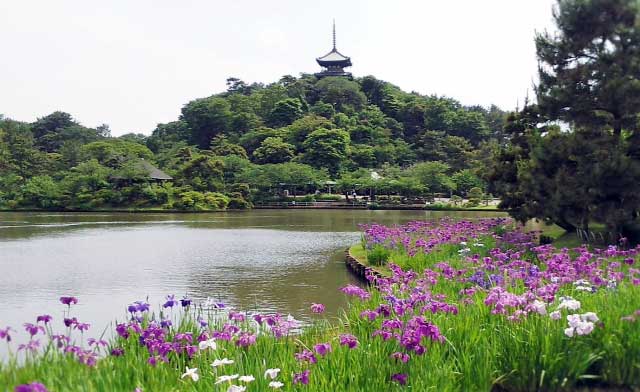 Sankeien Garden, Yokohama
Sankeien Garden, Yokohama Sankeien Garden, Yokohama
Sankeien Garden, Yokohama
History
Sankeien Garden was designed and built by Tomitaro Hara (1868-1939), who went by the pseudonym Sankei Hara. He had made his fortune in the silk industry. Sankeien Garden opened in 1906 and was refurbished in 1953 after suffering heavy damage in World War II.
Structures on Display
Among the most notable of the 20 or so structures in the garden are:
Kakushokaku - Upon entering Sankeien, this is the first major structure that can be seen. It was the residence of the Hara family, and is known to be the site of gatherings of Japan's cultural and political figures that Sankei Hara knew. Although it is open to the public only in the summer, it can be rented and used for parties and meetings. It was built in 1902 and has 950 square meters of space inside.
Rinshunkaku - Perhaps the most beautiful building in Sankeien, it was built in 1649 and moved from Kyoto in 1917. This villa was built by Yorinobu, who was the son of the first Edo-era shogunate, Tokugawa Ieyasu. Rinshunkaku is famous for its ink paintings done on the sliding doors and walls.
Former Yanohara House - One of the largest gassho-style houses left standing in Japan, this two-story house of the wealthy Yanohara family was built during the Edo era and moved to Sankeien in 1960 from Shirakawa-go. It is the only building in Sankeien that is open to the public all year round. On the second floor (be careful going up the extremely steep steps) is an exhibition of Japanese folk articles.
Three-Story Pagoda of Old Tomyoji - The oldest wooden pagoda in the Kanto region, this pagoda was built in 1457 and moved in 1914. It came from the abandoned Tomyoji Temple in Kyoto Prefecture. It can be seen from any point in Sankeien.
Choshukaku - dates from 1623 and is believed to have been first built at Nijo Castle in Kyoto. The structure is associated with Iemitsu Tokugawa, the third shogun.
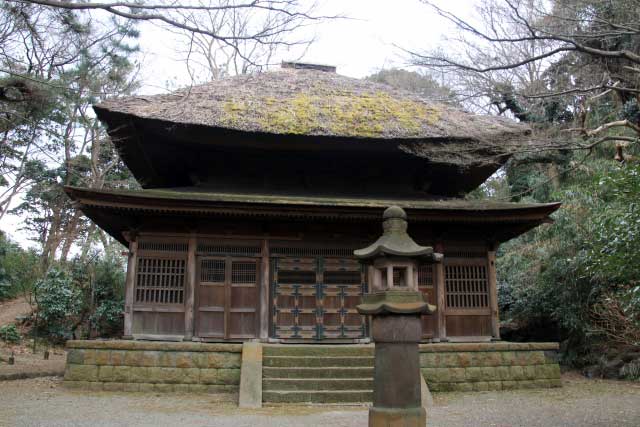 Former hall of Tokeiji Temple from Kamakura, Sankeien Garden, Yokohama
Former hall of Tokeiji Temple from Kamakura, Sankeien Garden, Yokohama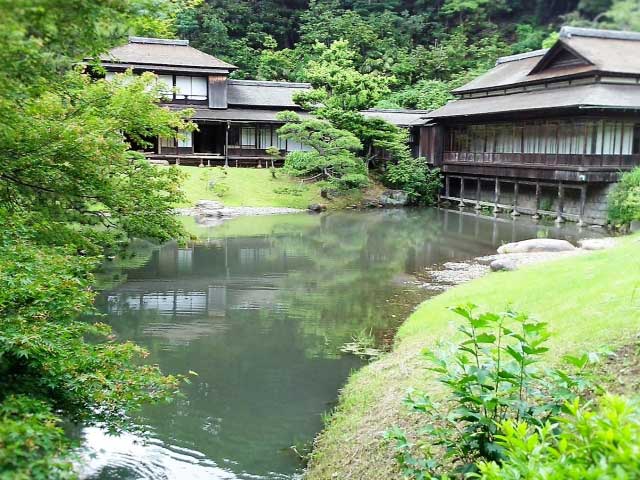 Sankeien Garden, Yokohama
Sankeien Garden, Yokohama
Seasonal Flowers
More than 25 kinds of flowers can be seen at various times through the year. The heaviest concentration of flowers can probably be seen from late March until May.
At that time you are likely to see about 10 kinds of flowers. A mid-June trip may revel beautiful irises, azaleas, water lilies and hydrangeas.
The Koyo season (the changing of the fall colors) is probably the best time to visit Sankeien.
Park Hours
The Nippon Maru sailing ship and Yokohama Port Museum are open between 10 am and 5 pm, every day except Monday. However, it is open on Mondays that fall on a national holiday, in which case it is closed the next day, Tuesday. Also closed at year-end.
Hours, Entrance Fee and Parking
The park is open from 9am to 5pm, with last entry allowed until 4.30pm. Ticket prices are 700 yen for people 15 and above, and 200 yen people aged 14 and below. Parking is 500 yen for two hours and 100 yen for each additional 30 minutes. Closed December 29, 30, 31.
Other notes: Pets are not allowed. Smoking is permitted only in designated areas.
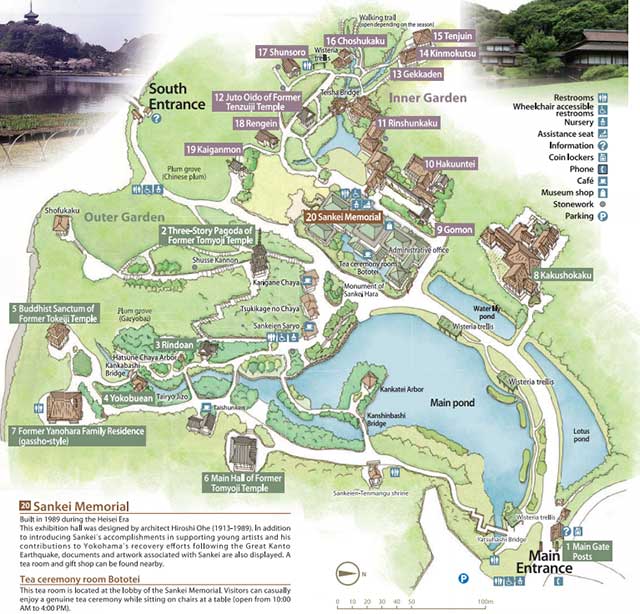 Sankeien Garden Map, Yokohama
Sankeien Garden Map, Yokohama
Access
From Yokohama Station you can take city bus #8 or #148 from the No. 2 bus stop on the east side of Yokohama Station. After about a 35-minute ride get off at Honmoku Sankeien Mae stop. It is about a five-minute walk.
Other possibilities to get to Sankeien:
1. From Sakuragicho Station (four minutes from Yokohama Station on the Negishi Line), take city bus #8 or #148 from the No. 2 bus stop on the east side of Yokohama Station. After about a 25-minute ride get off at Honmoku Sankeien Mae stop. It is about a five-minute walk.
2. From Motomachi-Chukagai Station (eight minutes on the Minatomirai Line Express from Yokohama Station) go out Exit 4 (Yamashita-cho) and take city bus #8 or #148. Get off at Honmoku Sankeien Mae stop. It is about a five-minute walk.
How to get to Sankeien by car: From the Yokohama Bay Bridge, get off at Honmoku Futo Ramp and follow the road until you reach a T-junction. Take a left at this junction. Turn right at Honmoku Motomachi Iriguchi.
Sankeien Garden (www.sankeien.or.jp)
58-1 Honmokusannotani
Naka-ku, Yokohama
Kanagawa 231-0824
Tel: 045 621 6343
Read more about Sankeien Garden
